
AT&T
MERLIN LEGEND???
Communications System
Telephone User's Guide

AT&T
MERLIN LEGEND???
Communications System
Telephone User's Guide
Notice
Every effort was made to ensure that the information in this book was complete and accurate at the time of printing. However, information is subject to change.
Federal Communications Commission (FCC)
Electromagnetic Interference Information
This equipment has been tested and found to comply with the limits for a Class A digital device, pursuant to Part 15 of the FCC Rules. These limits are designed to provide reasonable protection against harmful interference when the equipment is operated in a commercial environment. This equipment generates, uses, and can radiate radio frequency energy and, if not installed and used in accordance with the instruction manual, may cause harmful interference to radio communications. Operation of this equipment in a residential area is likely to cause harmful interference, in which case the user will be required to correct the interference at his own expense.
Canadian Department of Communications (DOC)
Interference Information
This digital apparatus does not exceed the Class A limits for radio noise emissions set out in the radio interference regulations of the Canadian Department of Communications.
Le pr??sent appareil num??rique n'??met pas de bruits radio??l??ctriques d??passant Ies Iimites applicables aux appareils num??riques de la classe A prescrites dans Ie R??glement sur Ie brouillage radio??lectrique ??dict?? par Ie minist??re des Communications du Canada.
Trademarks
MERLIN LEGEND is a trademark of AT&T.

Rings
One long _______________________ Inside call One long and one short ___________ Outside call
One long and two short ____________ Transfer or returning call One long and three short ___________ Returning Callback call
Line Button Lights
Red Green
Red and green Red and green
Red and flash green Red and flash green Fast flash green Slow flash green
Automatic connection Line or feature in use Line Request in use You???re on line Incoming call Returning transfer Held call (yours)
Held call
Conference Calls
1.Dial first extension or number
2.Press Conf
3.Press line button
4.Dial next extension or number
5.Announce call and press
C o n f
6.Repeat steps
7.Hang up to end conference
???Press Drop and line button to drop single participant
???Press Hold to temporarily leave conference
???Press any participant???s line button to rejoin conference
Transfer Calls
Unannounced Transfer
1.Press Transfer
2.Press line or SA button
3.Dial extension or number
4.Press Transfer or hang up
Announced Transfer
1.Press Transfer
2.Press line or SA button
3.Dial extension or number
4.Announce call
5.Press Transfer, hang up, or return to call on hold
1.Press Auto Dial button
2.Announce call
3.Press Transfer, hang up, or return to call on hold
1. Press Auto Dial
1.Press

Feature Use
Programmed Button
1. Program a line button for each feature (Appendix C)
2. Press programmed button
Feature Code
1.Press Feature
2.Dial code (see below)
Account Code Entry
Call
Follow Me
Forward
Forward/Follow
??? one
??? from your phone ??? Last Number Dial
Account Codes
Extension Numbers

Contents
Contents i

Contents
???Auto Dial
???Callback
???Call Waiting
???Conference
???Coverage
???Line Request
???Messaging
???Paging
???Park
???Pickup
???Privacy
???Recall

The exclamation point in an equilateral triangle is intended to alert the user to the presence of important operating and maintenance
(servicing) instructions in the literature accompanying the product.
IMPORTANT SAFETY INSTRUCTIONS
Always follow these basic safety precautions when using your telephone equipment. These precautions reduce the risk of fire, electric shock, and injury to you and damage to the equipment.
??? Read and understand all instructions.
???Follow all warnings and instructions marked on or packed with the telephone.
???Do not use the telephone near water, as in a wet basement. The telephone can be hazardous if immersed in water. To avoid the possibility of electrical shock, do not use it when you are wet. If you accidentally drop it into water, do not retrieve it until you have first unplugged the line cord from the modular wall jack. Do not plug the telephone back in until it has dried thoroughly.
???Do not use the telephone (other than a
telephone) during electrical storms in your immediate area. There is a remote risk of electric shock from lightning.
??? Unplug the telephone from the wall outlet before cleaning. Use a damp cloth for cleaning. Do not use liquid or aerosol cleaners on the phone.
v
???Never push objects of any kind into the telephone through openings or slots. Never spill liquid of any kind on the telephone.
???Do not use the telephone near a gas leak. If you suspect a gas leak, report it immediately, but use a telephone away from the area in question. The telephone???s electrical contacts could generate a tiny spark. While unlikely, it is possible that the spark could ignite heavy concentrations of gas.
???To reduce the risk of electric shock, do not disassemble the telephone. There are no
???Call your AT&T representative or authorized dealer when service or repair work is needed.
???Accessories include answering machines, alerts, modems, and fax machines. To connect an accessory, you must first
have a
 WARNING:
WARNING:
???For your personal safety DO NOT install an MFM yourself.
???ONLY an authorized AT&T technician or dealer rep- resentative shall install, set options, or repair an MFM.
???To eliminate the risk of personal injury due to electric shock, DO NOT attempt to install or remove an MFM from your MLX telephone. Opening or removing the module cover of your telephone may expose you to
dangerous voltages.
SAVE THESE INSTRUCTIONS
vi

About This Book
This book gives you the information you need to use your
About This Book v i i

About This Book
Conventions Used
The following typographic conventions are used in this book:
??? Buttons that you program
Press Privacy.
??? Buttons that are programmed at the factory (imprinted buttons) are shown in bold Roman type with initial capitals:
Press Transfer.
??? Important words are shown in bold type:
Use this button to make inside and outside calls.
??? Symbols or numbers that you enter using the dialpad are shown in bold type:
Dial ??? 760.
viii Conventions Used

About This Book
How to Comment on This
Book
We welcome your feedback on this book. Please use the feedback form on the next page. If the form is missing, send your comments to A. Sherwood, AT&T, 99 Jefferson Road, Rm. # 2A25, Parsippany, NJ 07054.
How to Comment on This Book i x

Your
Your
Your phone has many features. Some of these, such as Transfer and Conference, are built in. Others, such as Forward and Call Waiting, can be programmed and used when you need them.
Your
Your

Your
Handset
Button Labeling Card
Line Buttons (10)
Message Light
Dialpad
 Volume Control
Volume Control
Dedicated Feature Buttons (8)
User Cards and Tray

Your
Button labeling card
A card you can label with the line or feature assigned to each line button
Dedicated feature buttons
The 8 imprinted buttons for the features used most often
Desk stand (not shown)
A support that adjusts to two heights and can be removed for wall mounting
Dialpad
The numbered buttons, including ??? and #, that are used to dial phone numbers and feature codes
Handset
The
Line buttons
The 10 buttons with red and green lights used to make and receive calls. You can program any unlabeled buttons for feature use.
Message light
A light that goes on when you have a
User cards and tray
Instructions for feature use and directory information in a sliding tray under the phone
Volume control
A button for controlling the volume of the speaker, handset, and ringer

Your
Dedicated Feature Buttons
Eight imprinted (dedicated) feature buttons, are located in the lower left corner of the phone. These buttons are programmed for the features you use most often.
Four of the buttons have lights next to them to show their on/off status. The Feature, HFAI, and Speaker lights are green. Mute is red.
Feature Press to select and use your phone???s features. Feature codes are listed in Appendix B and on the user cards under the phone.
HFAI Press to respond to
Mute Press to turn the microphone in the speakerphone on and off. By pressing Mute during a conversation, you can speak privately with someone in your office without being heard by the caller.

Your
Speaker Press to turn on the speakerphone so you can make or answer a call without using the handset.
???Press Speaker before dialing to get a dial tone.
???Press Speaker when the phone rings to answer the call.
???Press Speaker while the handset is in use to turn off the handset and turn on the speakerphone. (You can then hang up the handset; the call remains on the speakerphone.)
???Press Speaker while the speakerphone is in use to hang up the phone.
Transfer Press to send a call to another phone.
Conf Press to add another person to a call for conferencing with up to five people including you.
Drop Press to disconnect a person from a conference call.
Hold Press to put a call on hold. The green light next to the line button with the call on hold flashes until the call is resumed or the person hangs up. As a reminder, the phone beeps once every 60 seconds. More than one call at a time can be put on hold.
Depending on how your system is set up, Transfer, Conf, Drop, and Hold may not work exactly as described here. Ask your system manager if your system works differently.
Dedicated Feature Buttons 1 - 5

Your
Line Buttons
There are ten line
Two or more line buttons are labeled either ICOM (Intercom) or SA (System Access). You have either ICOM or SA buttons, but never both.
If you have ICOM buttons, use them for inside calls only. Use buttons labeled with phone numbers for outside calls.
If you have SA buttons, use them for both inside and outside calls. You must enter a
You can program a feature onto any unlabeled line button. See Chapter 3 for more on programming unlabeled line buttons.
Depending on your company, you may or may not have all the buttons described next. If your phone has SA buttons, turn to page
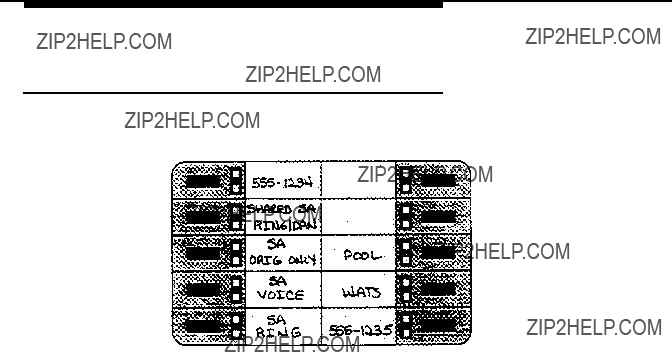
Your
Phones with SA Buttons
SA Ring. Use this button to make and receive both inside and outside calls. To call an inside number, dial only the extension. For outside calls, dial a
SA Voice. Use this button to make inside
calls and outside calls and to receive both inside and outside calls.
Line Buttons 1 - 7

Your
SA Originate Only. Use this button only to make calls; calls do not come in on this button. To make an outside call, enter a
Shared SA. Use this button to answer calls for
SA Ring buttons.
a
WATS. Use buttons labeled with special service names like
WATS to make and receive outside callsat a reduced cost. A
Pool. Use these buttons to make and receive outside calls.
A Pool button automatically selects one of a group of outside lines. A

Your
Phones with ICOM Buttons
ICOM Ring. Use this button to make inside ringing calls and
to receive both inside ringing and
You cannot use this button for outside calls, but they can be transferred to you.
lCOM Voice. Use this button to make inside voice- announced calls and to receive both inside ringing and
Line Buttons 1 - 9

Your
ICOM Originate Only. Use this button to make inside calls; calls do not come in on this button. This button is set up by your company to make either inside ringing or voice- announced calls.
WATS. Use buttons labeled with special service names like
WATS to make and receive outside callsat a reduced cost.

Your
Line Button Lights
Each line button has two lights next to it, a red one and a green one, showing whether the line is available, in use, or on hold.
Line Button Lights 1 - 1 1

Your
Caring for Your Phone
First unplug the phone from the wall jack, then use a soft cloth lightly dampened with water or a mild soap solution to clean the phone.
 CAUTION:
CAUTION:
To prevent permanent damage, do not immerse the phone in water or any other liquid, or use liquid or aerosol cleaners directly on the phone.
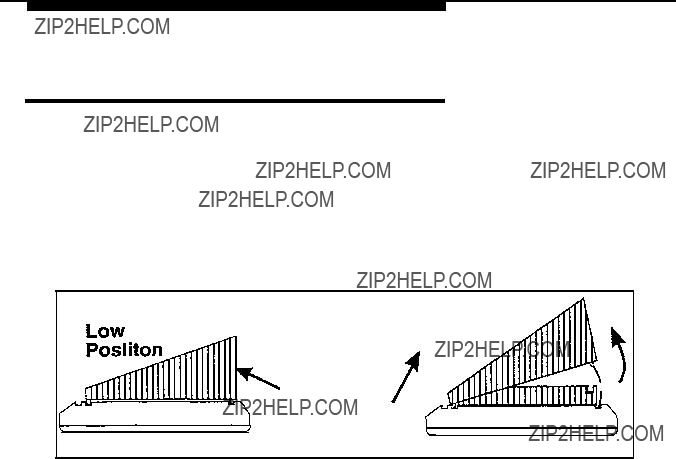
Your
Adjusting the Desk Stand
The angle of a desktop phone can be adjusted. Put the phone face down on a flat surface, remove the cord from the clips in the stand, and follow the steps below.
1.Press on the top rear center of the stand to release the tab.
2.Pull the stand toward you and away from the phone.
Press
& Lift
3 . To adjust the stand to the low position, insert the tab at the bottom of the stand into the corresponding lower slot. To adjust the stand to the high position, insert the tab at the bottom of the stand into the corresponding upper slot.
4 . Lower the stand and press the tab at the top into the corresponding slot on the phone. Replace the cord in the clips in the stand.
Adjusting the Desk Stand 1 - 1 3

Your
The diagram on the bottom of the user card tray also tells you how to adjust the stand.

Making and Answering
Calls
How you make outside calls depends on the line buttons on your phone. Instructions for making outside calls on phones with SA buttons are on page
How you make inside calls and how you answer calls is basically the same for phones with ICOM buttons and phones with SA buttons. These instructions begin on page
Making and Answering Calls 2 - 1

Making and Answering Calls
Making Outside Calls on
Phones with SA Buttons
Use any SA button, or any line button labeled with a phone number, Pool, or the name of a special service (for example, WATS) to make an outside call.
Only SA buttons need a
To Make an Outside Call
1.If the red light next to the line button you want to use is not on, press the button,
The red light goes on.
2.Lift the handset or press Speaker.
The green light next to the line button goes on.
3.If you are using an SA button, dial the
4.Dial the phone number.

Making and Answering Calls
Making Outside Calls on
Phones with ICOM Buttons
You can use any line button labeled with a phone number or the name of a special service (for example, WATS) to make an outside call. (ICOM buttons are reserved for inside calls.)
To Make an Outside Call
1.If the red light next to the line button you want to use is not on, press the button.
The red light goes on.
2.Lift the handset or press Speaker.
The green light next to the line button goes on.
3. Dial the outside phone number.
Making Outside Calls on Phones with ICOM Buttons 2 - 3

Making and Answering Calls
Making Inside Calls
Inside calls are either
When you make a
If the person you dialed is already busy on the speakerphone or Voice Announce is turned off on that phone, your call rings instead. A busy signal indicates that Do Not Disturb is in use or all ICOM or SA buttons set up to receive calls are in use.
See Chapter 5 for more on Voice Announce and Do Not Disturb.
To Make Inside
1.If the red light next to the ICOM Voice or SA Voice button is not on, press the button.
The red light goes on.
2.Lift the handset or press Speaker.
The green light next to the line button goes on.
3.Dial the extension number.
4.When you hear a beep, begin talking.

Making and Answering Calls
To Make Inside Ringing Calls
1.If the red light next to the ICOM Ring or SA Ring button is not on, press the button,
The red light next to the line button goes on.
2.Lift the handset or press Speaker.
The green light goes on.
3.Dial the extension number.
Note: If you have difficulty hearing the other person while using your speakerphone, background noise may be interfering with the reception and transmission. Lowering the volume of the speakerphone reduces the interference. Also, do not place anything in front of the speaker.
Making Inside Calls 2 - 5

Making and Answering Calls
Answering Calls
Your phone alerts you to an incoming call in several ways. The phone can ring or you can receive a
Call Waiting
You can prevent
To Answer
You can answer a
???Lift the handset.
???Press the Mute button to talk over your speakerphone. (Mute comes on automatically when you receive a voice- announced call, and pressing the Mute button turns it off.)
???Use HFAI. If HFAI is on before the call comes in, talk directly into the speakerphone without doing anything else.
Note: If you have difficulty hearing the other person while using your speakerphone, background noise may be interfering with the reception and transmission. Lowering the volume of the speakerphone reduces the interference. Also, do not place anything in front of the speaker.

Making and Answering Calls
To Identify Ringing Calls
(Distinctive Rings)
Your phone uses four distinctive ringing patterns to help you identify different types of incoming calls.
Answering Calls 2 - 7

Making and Answering Calls
To Answer Ringing Calls
If You Are Not On the Phone:
1. A flashing green light next to a line button indicates a call is ringing on that line button. If the red light next to the button with the call is not on, press that line button.
The red light goes on.
2. Lift the handset or press Speaker.
Both the red and green lights next to the line button stay on while you are on the call.
If You Are On the Phone:
1.To put a call on hold, press Hold.
2.To answer the ringing call, press the line button next to the flashing green light.
3.To return to the call on hold, press the line button next to the rapidly flashing green light.

Making and Answering Calls
Tones
When making a call or using a feature, you may hear a tone. Each tone has its own meaning.
Callback tone (five short beeps)
The outside line or the extension is busy and your call is programmed for Callback. (See Chapter 5 for more on Callback.)
Call Waiting tone (one or two beeps while you are on another call)
You have an inside call (one beep) or outside call (two beeps) waiting.
T o n e s 2 - 9

Using and Programming
Features
You can use most of your phone???s features either by pressing programmed line buttons or by dialing feature codes, depending on the following:
??? the number of unlabeled line buttons. If all the line buttons have lines assigned to them, you can use features only by dialing feature codes. If there are unlabeled line buttons, you can program features onto them. You can then use the feature by pressing just that button instead of dialing the feature code.
Using and Programming Features 3 - 1

Using and Programming Features
??? whether the feature needs a programmed line button.
Some features, such as Do Not Disturb, cannot be used with feature codes. You need to program a button to turn the feature on and off. The light next to the button provides a visual reminder when the feature is in use. The following features require programmed buttons. Programming codes are in Appendix C.
???Auto Dial
???Coverage
???Coverage Off
???Primary Individual Coverage
???Secondary Individual Coverage
???Group Coverage
???Do Not Disturb
???Headset/Handset Mute
???Messaging
???Posted Message
???Saved Number Dial
???Signaling and Notify

Using and Programming Features
???whether the feature can be used only by dialing a feature code. Some features are meant to be used by dialing a
using codes instead of programming separate Auto Dial buttons to dial each number. The following features require feature codes. These codes are in Appendix B.
???Call
???Follow Me
???Forward/Follow Me
???Messaging
???Personal Speed Dial
General instructions for using and programming features follow. Specific instructions for using and programming each feature are in Chapter 5.
Using and Programming Features 3 - 3

Using and Programming Features
Using Features
There are two ways to use your phone???s features:
???Press a programmed button. When you have programmed a feature onto a line button, press that button to use the feature.
???Dial a feature code. Many features have a
To use a feature code:
1.Press Feature.
2.Dial feature code.

Using and Programming Features
Programming Features
Your company may have already labeled and programmed features onto line buttons. You can program any unlabeled line buttons with the features of your choice. While it isn???t necessary to program most features onto line buttons, it???s much faster to use the features if you do.
In addition to features that you program onto line buttons, you can program other features to set up the way you want your phone to work. Once one of these features is programmed, you don???t need to press a programmed button to use it. For example, you can program your phone with Ringing Options to change how your phone rings, or you can turn on Call Waiting to make sure important calls get through.
To Program Features Using Programming Codes
Before you begin programming, remove the clear plastic that covers the button labeling card and write in the names of the features next to the buttons to be programmed. Replace the cover with the textured side up.
Programming Features 3 - 5

Using and Programming Features
While you are programming, the phone rings to alert you that you cannot make or receive calls until the ringing stops. To turn off the ringing, press Speaker. In addition, depending on the ringing option programmed on your phone, the lights next to the line buttons remain steady (immediate ring), flash (delayed ring), or don???t come on at all (no ring) when you program your phone. For more on Ringing Options, see Chapter 5.
If you are unable to program your phone, someone may be programming the system. Ask your system manager if you have problems.
1.Press Feature and dial 00.
Your phone rings repeatedly. To turn off the ringing, press Speaker.
2.Press button you labeled.
3.Dial programming code (listed in card tray and in Appendix C), See Notes.
4.Repeat steps 2 and 3 for any other buttons you want to program.
5.Press Feature and dial ??? 00.
Notes:
???If you want to change the feature on a button that is already programmed, simply press that button in step 2 to program the new feature over the existing feature.
???Step 3 may need additional steps, depending on the
feature you are programming. For example, Auto Dial requires that you dial a phone number. (See Auto Dial, Chapter 5.)

Feature Finder
The Feature Finder on the next few pages helps you easily identify and find features by function instead of by name:
???Calling Basics
???Covering Calls
???Messaging and Paging
???Privacy
???Ringing
Chapter 5 lists features alphabetically with descriptions and
Feature Finder 4 - 1

Feature Finder
Calling Basics

Feature Finder
Covering Calls
Messaging and Paging
while you are on a call
Feature Finder 4 - 3

Feature Finder
Privacy
Ringing

Features
This chapter describes features alphabetically with instructions for programming and using them. Some features have to be programmed on your phone before you can use them. Others are built in to the system and do not need programming.
You use most features by pressing a programmed line button or dialing a feature code.
Features 5 - 1

Features
Account Code Entry
Account codes help your company track phone use to bill clients and to forecast and budget costs. You can use account codes for incoming as well as outgoing calls if your system is programmed for both.
If your system has this feature, it is either required or optional:
??? Required. You must enter an account code before making an outside call. Entering an account code for incoming calls is optional.
??? Optional. If you choose to use account codes, you can enter them on both incoming and outgoing calls, either before or during the call.
To Program an Account Code Entry Button
1.Label button to be programmed as Account Code.
2.Press Feature and dial 00.
3.Press button you labeled Account Code.
4.Dial ??? 82.
5.Press Feature and dial ??? 00.

Features
To Enter an Account Code Before Calling
1.Press programmed Account Code button, or press Feature and dial 82.
2.Dial account code followed by #. See Notes.
3.Press outside line or SA button.
4.Lift handset or press Speaker.
5.Dial phone number (including
Notes:
??? For step 2, if you have programmed an outside Auto Dial button with a specific account code followed by #, you can press the button whenever you need to enter the code. (See Auto Dial.)
??? If you are using account codes on a conference call, follow steps
To Enter or Change Account Codes During a Call
1.Press programmed Account Code button, or press Feature and dial 82.
2.Dial account code followed by #.
Notes:
???Your caller does not hear you enter the account code.
???If you make a mistake, you can correct the code using the above procedure.
???If an account code was already entered for a call when the call arrived, you cannot change it.
Account Code Entry 5 - 3

Features
Auto Dial
Use Auto Dial to automatically dial either inside or outside numbers you call often.
You can program inside Auto Dial buttons for extensions of
You can program outside Auto Dial buttons for important numbers, account codes,
Note: Program emergency numbers and make test calls during
To Program Inside and outside Auto Dial Buttons
1.Label button with person???s name or other identifier.
2.Press Feature and dial 00.
3.Press button you labeled.
4.Dial ??? 22 for inside numbers or ??? 21 for outside numbers. See Notes.
5.Dial extension or outside number (including any necessary
6.Repeat steps 1, 3, 4, and 5 to program additional buttons.
7.Press Feature and dial ??? 00.

Features
Notes:
???Program account codes, access codes, and outside numbers as outside Auto Dial buttons.
???Special characters may be needed when you program an outside Auto Dial button. For more on special characters and their meanings, see Appendix A.
To Use an Outside Auto Dial Button
Press programmed Auto Dial button.
Your speakerphone goes on, and the number is dialed automatically.
Note: If your phone has SA buttons and the Auto Dial number includes the
To Use an Inside Auto Dial Button for
1.Press ICOM Voice or SA Voice.
2.Press programmed Auto Dial button.
Your speakerphone goes on, and the number is dialed automatically.
3. Begin talking after the beep.
To Use an Inside Auto Dial Button for Ringing Calls
Press programmed Auto Dial button.
Your speakerphone goes on, and the number is dialed automatically.
Auto Dial

Features
Callback
When you reach a busy extension or the outside line you want to use is busy, use Callback to automatically place the call when the extension or line is free.
You???ll hear a priority ring
On phones with ICOM buttons, Callback works only for busy inside extensions; use Line Request for busy outside lines. On phones with SA buttons, Callback works with busy inside extensions; it works with busy outside lines only when you are using an SA or Pool button.
Callback works only when the outside line you want to use is busy, which is indicated by a fast busy signal. Callback does not work when the outside phone you call is busy, which is indicated by a normal busy signal.
You can use Callback either selectively or automatically:
???Selective Callback is activated when you dial the feature code or press a programmed button.
???Automatic Callback is activated every time you reach a busy extension or, if your phone has SA buttons, a busy outside line. You need to program your phone for Automatic Callback.

Features
To Program a Selective Callback Button
1.Label button to be programmed as Callback.
2.Press Feature and dial 00.
3.Press button you labeled Callback.
4.Dial ??? 55.
5.Press Feature and dial ??? 00.
To Use Selective Callback for Busy Extensions
1.When you reach a busy extension, press programmed Callback button, or press Feature and dial 55.
2.Hang up when you hear five short beeps.
Your call is placed in queue until the extension becomes available. The green light next to the line button flashes.
3.Lift handset or press Speaker when you hear one long ring and three short rings.
You hear three short beeps, and your call is dialed automatically.
To Use Selective Callback for Busy Outside Lines
1.If you hear a fast busy signal after dialing an outside number, press programmed Callback, or press Feature and dial 55.
If you hear a second dial tone, finish dialing the number and press #.
2.Hang up when you hear five short beeps.
Your call is placed in queue until the line becomes available. The green light next to the line button flashes.
3.Lift handset or press Speaker when you hear one long ring and three short rings.
You hear three short beeps, and your call is dialed automatically.
Note: On phones with ICOM buttons, use Line Request instead of Selective Callback for busy outside lines.
Callback 5 - 7

Features
To Turn Automatic Callback On and Off
1.Press Feature and dial 00.
2.Press any ICOM or SA button.
3.Dial ??? 12 to turn on or ?????? 12 to turn off.
4.Press Feature and dial ??? 00.
To Use Automatic Callback
1.When you reach a busy line or extension and hear five short beeps, hang up.
Your call is placed in queue until the line or extension becomes available. The green light next to the line button flashes.
2.When you hear one long ring and three short rings, lift handset or press Speaker.
You hear three short beeps, and your call is dialed automatically.
To Cancel a Callback Request
1.Press the button the call is on.
2.Lift handset or press Speaker.
3.Press Drop.
4.Press the button the call is on again.

Features
Call Waiting
When all the ICOM or SA buttons on your phone are busy and another call comes in, Call Waiting informs you of inside calls with a single beep and outside calls with two beeps.
To answer a waiting call, you can either hang up or put your current call on hold. If you hang up, your phone will ring with the waiting call. If you put the call on hold, you need to press an ICOM Originate Only or SA Originate Only button and dial the feature code to pick up the waiting call. If you have more than one call waiting, the calls are delivered to your phone in the order they arrived. Callers hear a special Call Waiting ring instead of a busy signal.
Call Waiting works only on ICOM and SA buttons, and only when they are all in use. Call Waiting does not work if your calls are being covered. You must program your phone to accept Call Waiting.
To Turn Call Waiting On and Off
1.Press Feature and dial 00.
2.Press any ICOM or SA button.
3.Dial ??? 11 to turn on or ??? ??? 11 to turn off.
4.Press Feature and dial ??? 00.
Call Waiting 5 - 9

Features
To Complete a Call and Answer a Waiting Call
1.When you hear Call Waiting tone, hang up.
Your phone rings.
2.Lift handset or press Speaker.
You are connected to the call.
To Put a Call on Hold and Pick Up a Waiting Call
1.Press Hold.
2.Press SA Originate Only or ICOM Originate Only. See Note.
3.Press Feature and dial 87.
You are connected to the call.
4.To return to call on hold, press button with
Note: An ICOM Originate Only or SA Originate Only button
must be available for you to pick up the call; otherwise you must hang up to get the call.

Features
Conference
Use Conference to include up to five people in the same conversation. You can conference one or two outside numbers and up to three extensions, including your own.
Conference allows you to consult privately with each participant before adding him or her to the conference and to put the entire conference on hold. To drop any participant from the conference, press the Drop button.
Note: Conference calls to outside locations may vary in transmission quality.
Conference 5 - 1 1

Features
To Set Up a Conference Call
1.Make call to first outside number or extension.
2.Press Conf after person answers.
The green light next to the line button flashes to signal that the person is on hold for the conference.
3.To make next call, press an ICOM or SA button for an inside call or an SA or line button for an outside call.
4.Dial number or extension; after the person answers, press Conf. See Note.
All partlicipants, including you, are connected.
5.Press Conf again to add another person.
You are separated from the conference while you add the next person, but participants are still able to talk.
6.Repeat steps 3, 4, and 5 for rest of
7.To end conference, hang up.
Note: If you make a dialing error while adding a participant to a conference, you must hang up and start over.
TO Leave a Conference Temporarily
1. Press Hold.
Conference participants are still able to converse.
2.To rejoin conference, press line button of any conference participant.
To Drop a Conference Participant
1.Press Drop.
2.Press line button of any conference participant. See Note.
Note: Drop does not work when the conference is on hold.

Features
Coverage
Coverage allows
You can program your phone to have inside and outside calls covered. Or you can program your phone so that only outside calls are covered.
Individual Coverage
With Individual Coverage, your
???Primary Individual Coverage. When your phone rings, the call is sent immediately to all
Coverage 5 - 1 3

Features
???Secondary Individual Coverage. When your phone rings, the call is sent immediately to all
Group Coverage
Your company may be organized into groups with certain individuals designated to answer calls for each group. This kind of coverage is useful when departments share personnel, as in a secretarial pool. One group of secretaries can be set up like a message center to cover calls for all the phones in the system.
Your phone must be programmed by your company to have your calls sent to Group Coverage. However, if you receive calls sent to Group Coverage, you can program your own phone with Group Coverage buttons.

Features
Group Coverage can work with Individual Coverage or alone. If you have both, your calls only go to Group Coverage if the person who provides Individual Coverage does not answer after a
To Have Your Calls Covered
To have a
If you set Ringing Options for no ring on any line buttons, calls on those line buttons do not go to coverage. In addition, if you have Group Coverage and you turn Coverage off, your co- workers cannot use Group Pickup to answer your calls (see Pickup).
Coverage 5 - 1 5
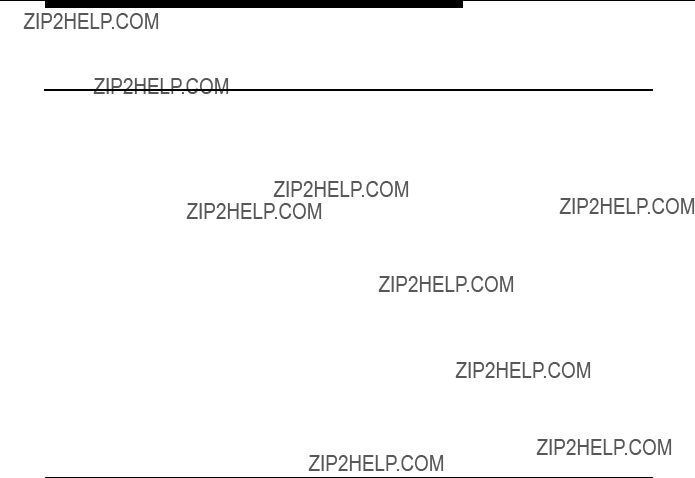
Features
To Program Which Calls Are Covered
1.Press Feature and dial 00.
2.Press any ICOM or SA button.
3.Dial ??? 48 for both inside and outside calls, or dial ??? ??? 48 for outside calls only.
4.Press Feature and dial ??? 00.
Notes:
???This procedure applies to both Individual and Group Coverage.
???Your phone is preset for both inside and outside coverage. Follow these steps to change the setting from inside and outside coverage to outside only or to change outside only to inside and outside coverage.
To Program a Coverage Off Button
1.Label button to be programmed as Coverage Off.
2.Press Feature and dial 00.
3.Press button you labeled Coverage Off.
4.Dial ??? 49.
5.Press Feature and dial ??? 00.

Features
To Turn Coverage Off and On
1.Press programmed Coverage Off button.
The green light next to the button goes on, and your calls do not go to coverage.
2.Press programmed Coverage Off button again.
The green light next to the button goes off, and your calls are sent to coverage.
To Cover Calls
If you cover calls for a particular
Program at least one Group Coverage button for each group you cover. To handle more than one call at a time for a particular group, you can program as many as eight Group Coverage buttons for that group.
Coverage 5 - 1 7

Features
To Program an Individual Coverage Button
1.Label button to be programmed as
2.Press Feature and dial 00.
3.Press button you labeled
4.Dial ??? 40 for primary Coverage or ??? 41 for secondary Coverage.
5.Dial extension of phone you want to cover.
6.Press Feature and dial ??? 00.
To Program a Group Coverage Button
1.Label button to be programmed as Group
2.Press Feature and dial 00.
3.Press button you labeled Group
4.Dial ??? 42.
5.Dial group number (ask system manager for this number).
6.Press Feature and dial ??? 00.
To Use Individual or Group Coverage
1.Lift handset or press Speaker when call rings on programmed
Individual Coverage or Group Coverage button.
2.If not immediately connected, press programmed
Individual Coverage or Group Coverage button.
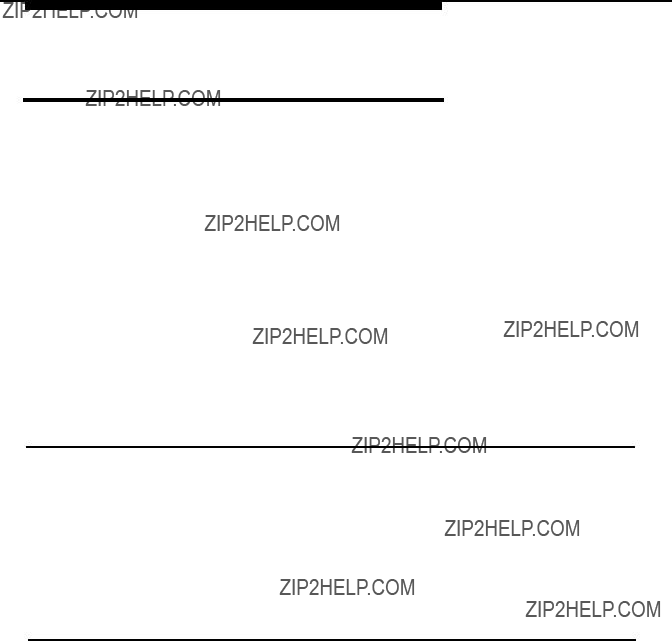
Features
Do Not Disturb
Do Not Disturb prevents your phone from ringing and prevents paging and
Do Not Disturb does not prevent Callback calls, transferred calls returning to you, or calls from anyone covering your phone with an Individual Coverage button. Do Not Disturb must be programmed onto a line button.
To Program a Do Not Disturb Button
1.Label button to be programmed as Do Not Disturb.
2.Press Feature and dial 00.
3.Press button you labeled Do Not Disturb.
4.Dial ??? 47.
5.Press Feature and dial ??? 00.
To Use Do Not Disturb
1.To turn on, press programmed Do Not Disturb button.
The green light next to the button goes on.
2.To turn off, press programmed Do Not Disturb button again.
The green light next to the button goes off.
Do Not Disturb 5 - 1 9

Features
Forward and Follow Me
Forward and Follow Me send your calls to another extension or to an outside phone. This allows callers to reach you when you are working at someone else???s desk or even at another location, such as your home. Your phone must be set up by your company to allow you to forward calls to an outside number (ask your system manager).
Note: Calls forwarded to outside locations may vary in transmission quality.
You can also forward calls to another extension when you are too busy to answer them yourself or if you want your calls screened. However,
Forward is set up from your phone and can be canceled from either your phone or the extension calls are forwarded to.
Follow Me is set up from another extension and can be canceled from that extension or from your own phone. Once set up, your calls are sent to the extension where Follow Me was initiated.
If several people are sending their calls to you, you can cancel Forward and Follow Me from your phone??? either one extension at a time or all extensions at once.

Features
To Program a Forward Button
1.Label button to be programmed as Forward.
2.Press Feature and dial 00.
3.Press button you labeled Forward.
4.Dial ??? 33.
5.Press Feature and dial ??? 00.
To Forward Calls to an Extension
1.Press any ICOM or SA button.
2.Lift handset or press Speaker.
3.Press programmed Forward button, or press Feature and dial 33.
4.Dial extension.
Listen for double break in dial tone or check if green light next to Forward button is on. Your calls are now forwarded to the extension.
To Forward Calls to an Outside Number
1.Press any ICOM or SA button.
2.Lift handset or press Speaker.
3.Press programmed Forward button, or press Feature and dial 33.
4.Dial 9 on phones with ICOM buttons or the
5.Dial phone number; then dial #.
Listen for double break in dial tone; check if green light next to Forward button is on. Your calls are now forwarded to the outside number.
Note: If your phone has ICOM buttons, dial 9 to automatically select a free outside line for forwarding your calls.
Forward and Follow Me

Features
To Set Up Follow Me from Another Extension
1.Press any ICOM or SA button.
2.Lift handset or press Speaker.
3.Press Feature and dial 34.
4.Dial your extension.
Listen for double break in dial tone. Your calls are forwarded to the extension where Follow Me was initiated.
To Cancel Forward or Follow Me from Your Phone
1.Press any ICOM or SA button.
2.Lift handset or press Speaker.
3.Press programmed Forward button, or press Feature and dial 33.
4.Dial your extension.
Listen for double break in dial tone or check if green light next to Forward button is off. Calls you setup for Forward or Follow Me now ring at your phone.

Features
To Cancel Forward and Follow Me Sent from One Extension
1.Press any ICOM or SA button.
2.Lift handset or press Speaker.
3.Press Feature and dial ??? 34.
4.Dial extension calls are sent from.
Listen for double break in dial tone. Calls from that extension are no longer sent to your phone.
To Cancel Forward and Follow Me Sent from All Extensions
1.Press any ICOM or SA button.
2.Lift handset or press Speaker.
3.Press Feature and dial ??? 34 ??? .
Listen for double break in dial tone. Calls from all extensions are no longer sent to your phone.
Forward and Follow Me 5 - 23

Features
Headset/Handset Mute
When you are on the phone using the handset or headset, use Headset/Handset Mute to talk privately with someone in your office without the caller hearing you (you can still hear the caller). Headset/Handset Mute must be programmed onto an unlabeled line button.
When you press the programmed Headset/Handset Mute button while using the handset or headset, the red light next to the button goes on and the microphone in the headset or handset goes off. The light goes off and the microphone comes back on when you press the Headset/Handset Mute button again or when you hang up.
To Program a Headset/Handset Mute Button
1.Label button to be programmed as Headset/Handset Mute.
2.Press Feature and dial 00.
3.Press button you labeled Headset/Handset Mute.
4.Dial ??? 783.
5.Press Feature and dial ??? 00.
To Turn Headset/Handset Mute On and Off
1. To turn on, press programmed Headset/Handset Mute button while using the headset or handset.
The red light next to the button goes on, and the caller cannot hear you.
2.To turn off, press Headset/Handset Mute button again.
The red light next to the button goes off, and the caller can hear you.

Features
Last Number Dial
Use Last Number Dial to automatically redial the last inside or outside number you called.
To Program a Last Number Dial Button
1.Label button to be programmed as Last Number.
2.Press Feature and dial 00.
3.Press button you labeled Last Number.
4.Dial ??? 84.
5.Press Feature and dial ??? 00.
To Use Last Number Dial
1.Press the same type of button (ICOM, SA, Pool, or special service such as WATS) you used to place the call the first time.
2.Press programmed Last Number button, or press Feature and
dial 84.
Your speakerphone goes on, and the number is dialed automatically.
Last Number Dial
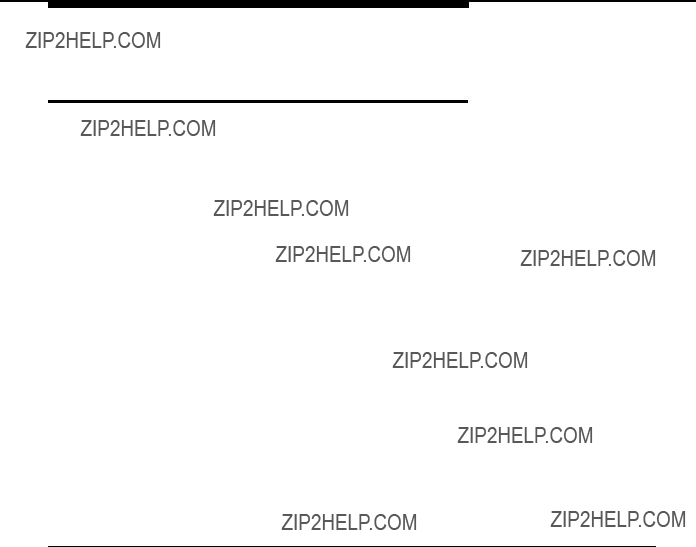
Features
Line Request
Line Request puts you in queue (???in line???) for access to a busy outside line. When the line becomes available, your phone alerts you with a beep. For example, when you want to use a WATS line and it is busy, use Line Request to notify you when the line is free. Aline is busy if the greeen light next to the line button is on.
Line Request works only on line buttons labeled with a phone number or the name of a special service (such as WATS ). If you used an SA or Pool button to make an outside call, use Callback to request busy outside lines.
Line Request is always present in your system; you don???t have to program it on your phone. If you press another line button or receive a call, Line Request is canceled.
To Use Line Request
1.When outside lines are busy, press line button you want to use (do not lift handset or press Speaker ).
2.When line is available, the phone
Speaker.
3.Dial number.

Features
Messaging
Use Messaging to send messages directly to
Leaving Messages
When you reach a busy or unanswered extension, you can leave a message that you called. You can also leave a message without calling first:
???For
???For
a message on a phone that doesn???t have a display or
Messaging 5 - 2 7

Features
To Program a Leave Message Button
1.Label button to be programmed as Leave Message.
2.Press Feature and dial 00.
3.Press button you labeled Leave Message.
4.Dial ??? 25.
5.Press Feature and dial ??? 00.
To Leave a Message on a Busy or Unanswered P h o n e
When you reach a busy or unanswered extension, press the programmed Leave Message button or press Feature and dial 25 within 15 seconds after dialing. See Note.
You continue to hear ringing or a busy signal, but your
Note: If your
To Leave a Message on a Display Phone without Calling
1.Press Feature and dial 53.
2.Dial
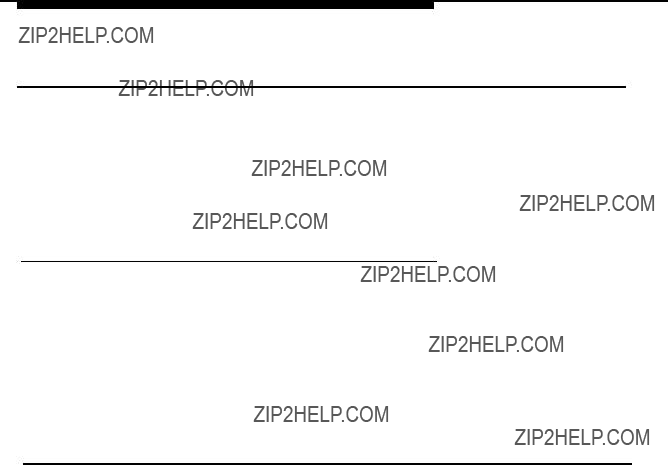
Features
To Cancel a Message You Left on a Display Phone
1.Press Feature and dial ??? 53.
2.Dial
Note: You cannot cancel
Receiving Messages
When the red Message light on your phone is on, you have a message from the system operator, or a
To Turn Off Your Message Light
Press Feature and dial 54.
The light goes off.
Messaging 5 - 2 9

Features
Posting Messages
To let
You can post 1 of 20 programmed messages to appear on

Features
To Program a Posted Message Button
1.Label button to be programmed as Posted Message.
2.Press Feature and dial 00.
3.Press button you labeled Posted Message.
4.Dial ??? 751.
5.Press Feature and dial ??? 00.
To Post a Message
1.Press programmed Posted Message button.
The green light next to the button flashes.
2.Dial code for message you want to post
The green light next to the button becomes steady.
To Cancel a Posted Message
1.Press programmed Posted Message button.
The green light next to the button flashes.
2.Dial 00.
The green light next to the button goes off.
Messaging 5 - 3 1
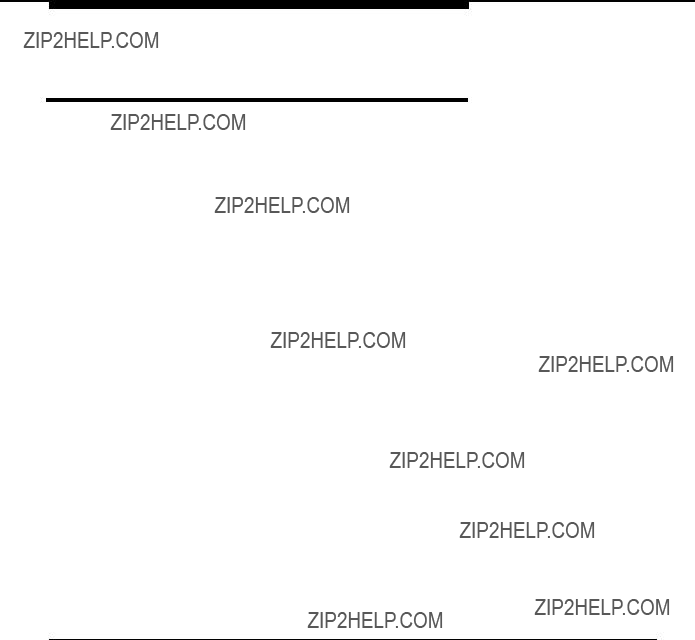
Features
Paging
Paging is using your phone to broadcast an announcement. You can page over your
Speakerphone Paging is heard on all speakerphones or, if set up by your company, by a selected group such as a department or work area. A Page All number is reserved for paging all the speakerphones; Group Page numbers are reserved for paging certain groups of speakerphones. Your system manager can provide these numbers. You can program Page All and Group Page buttons.
Loudspeaker Paging is heard by everyone in the building or area (called a ???zone???), depending on how the loudspeaker system is set up. A line button on your phone may have been programmed by your company for Loudspeaker Paging. (You cannot program a Loudspeaker Paging button yourself.) Or, if you don???t have a button, you can use Pickup and dial the line number for Loudspeaker Paging (provided by your company).
To Program Speakerphone Paging Buttons
1.Label button with Group
2.Press Feature and dial 00.
3.Press button you labeled Group
4.Dial ??? 22 and Group Page or Page All extension.
5.Press Feature and dial ??? 00.

Features
To Use Speakerphone Paging
1.Press any lCOM or SA button.
2.Lift handset. See Note.
3.Press Group
4.Make announcement after beep.
Note: Using the speakerphone for Speakerphone Paging may create a feedback tone.
To Use Loudspeaker Paging
1.Lift handset. See Notes.
2.Press programmed Loudspeaker Page button, or press Feature and dial 9 and Loudspeaker Page line number.
3.Dial code for zone you want to page (if necessary). See Notes.
4.Make announcement.
Notes:
???If the loudspeaker system has more than one zone, you will hear a beep or dial tone after pressing the Loudspeaker Page button. Then, dial the code number provided by your system manager for the zone you want to page.
???Using the speakerphone for Loudspeaker Paging may create a feedback tone.
Paging 5 - 3 3

Features
Park
If your
When you park a call on your phone, you are putting it on hold so it can be answered from any phone in the system. You then page your
Unanswered parked calls ring back at your phone within 30 seconds to 5 minutes, depending on how your system is
programmed. Calls that come in on Coverage buttons cannot be parked.
For information on Coverage buttons, see Coverage. For information on Speakerphone Paging and Loudspeaker Paging, see Paging. For instructions on using a Pickup button to answer a parked call, see Pickup.
5 - 34 P a r k

Features
To Program a Park Button
1.Label button to be programmed as Park.
2.Press Feature and dial 00.
3.Press button you labeled Park.
4.Dial ??? 86.
5.Press Feature and dial ??? 00.
To Use Park and Speakerphone Page
1.While on a call, press programmed Park button, or press
Transfer, dial your extension, and press Transfer again or hang up.
2.Press appropriate Group Page or Page All button, or press any
ICOM or SA button and dial Group Page or Page All extension.
3.Announce call and give your extension.
If parked call is unanswered, it rings back at your phone. See Notes.
Notes:
???If you park the call by transferring the call to your extension, you hear a busy signal.
???You can pick up a call you parked at your extension without waiting for it to ring back by pressing the line button where the call is parked.
Park 5 - 3 5
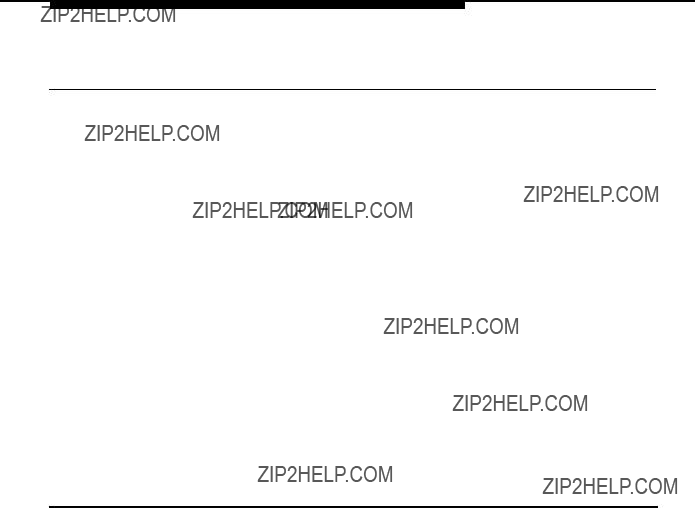
Features
To Use Park and Loudspeaker Page
1.While on a call, press programmed Park button, or press
Transfer, dial your extension, and press Transfer again, or hang up.
2.Press programmed Loudspeaker Page button, or press Feature and dial 9 and Loudspeaker Page line number.
3.Dial code for zone you want to page.
4.Announce call and give your extension.
If parked call is unanswered, it rings back at your phone.
Notes:
???If you park the call by transferring the call to your extension, you hear a busy signal.
???You can pick up a call you parked at your extension without waiting for it to ring back by pressing the line button where the call is parked.
To Pick Up a Parked Call
1.Lift handset or press Speaker.
2.Press programmed Pickup button, or press Feature and dial 9.
3.Dial extension where call is parked.
5 - 36 P a r k

Features
Personalized Ring
You can choose one of eight ringing patterns to make it easier to distinguish your phone???s ring from someone else???s. You hear the personalized part of the ring before you hear the distinctive ring for an inside, outside, transferred, or Callback call. (Chapter 2 tells you more about distinctive rings.)
To Program Personalized Ring
1.Press Feature and dial 00.
2.Press any ICOM or SA button.
3.Dial ??? 32.
4.Dial 1,2,3, . . . 8, as many times as needed and in any order, to hear all eight patterns.
After dialing each number, you will hear a different ringing pattern.
5.When you hear the ringing pattern you like, press Feature and dial ??? 00.
When you receive a call, you will hear your selected ringing pattern.
Note: Choose a different ringing pattern from your
Personalized Ring 5 - 37

Features
Personal Speed Dial
Use Personal Speed Dial to dial
To Program Personal Speed Dial Codes
1.Press Feature and dial 00.
2.Dial # and
3.Dial phone number or account code (including
4.Repeat steps 2 and 3 to program additional codes.
5.Press Feature and dial ??? 00.
Notes:
???Special characters may be needed when programming a Personal Speed Dial code. For more on special characters, see Appendix A.
???Use the Personal Speed Dial card in the card tray
under your phone to record the codes.
To Use Personal Speed Dial
1.Press Feature.
2.Dial
Your speakerphone goes on, and the number is dialed automatically.

Features
Pickup
Pickup lets you answer a ringing phone from another extension. You can pick up calls by dialing the feature code for Pickup along with the ringing phone???s extension or the number of the line with the call. Or you can press a programmed Pickup button.
Your company can also use Group Pickup to organize your
You can also use Pickup to answer a parked
To Program a Pickup Button for Any Line or Extension
1.Label button to be programmed as Pickup.
2.Press Feature and dial 00.
3.Press button you labeled Pickup.
4.Dial ??? 9.
5.Press Feature and dial ??? 00.
Pickup 5 - 3 9
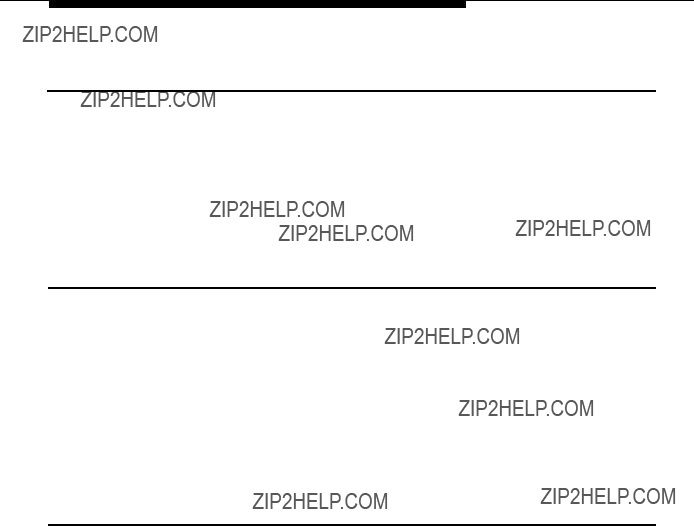
Features
To Use Pickup for Any Line or Extension
1.Press programmed Pickup button, or press Feature and dial 9.
Your speakerphone turns on automatically.
2.Dial extension or line number.
You are connected to call.
To Program a Pickup Button for a Specific Line or Extension
1.Label button as
2.Press Feature and dial 00.
3.Press button you labeled
4.Dial ??? 9.
5.Dial extension or line number (ask your system manager for line numbers).
6.Press Feature and dial ??? 00.
To Use Pickup for a Specific Line or Extension
Press programmed Pickup button for line or extension.
Your speakerphone turns on automatically, and you are connected to call.

Features
To Program a Group Pickup Button
1.Label button to be programmed as
2.Press Feature and dial 00.
3.Press button you labeled
4.Dial ??? 88.
5.Press Feature and dial ??? 00.
To Use Group Pickup
Press programmed
Feature and dial 88.
Your speakerphone turns on automatically, and you are connected to call.
Pickup 5 - 4 1
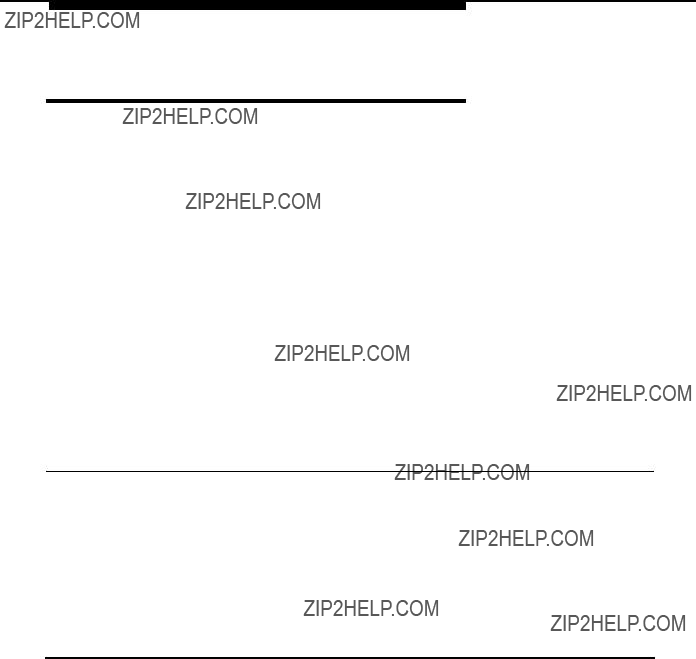
Features
Privacy
Use Privacy to prevent
When Privacy is programmed on a button, the light next to the button indicates when Privacy is on. If you use a feature code to turn Privacy on, there is no visual reminder that it is active.
Be sure to cancel Privacy when you want others to join your calls.
To Program a Privacy Button
1.Label button to be programmed as Privacy.
2.Press Feature and dial 00.
3.Press button you labeled Privacy.
4.Dial ??? 31.
5.Press Feature and dial ??? 00.
To Use Privacy
1.To turn on, press programmed Privacy button, or press Feature and dial 31.
2.To turn off, press programmed Privacy button, or press Feature and dial ??? 31.

Features
Recall
If your phone has ICOM buttons, use Recall to disconnect from one call and get a dial tone to make another call without hanging up. Just press the Recall button you programmed to get a new inside or outside dial tone. Or, if you make a mistake, press the Recall button and begin dialing again.
If your phone has SA buttons, you can press a programmed Recall button to disconnect from an inside call and get a dial tone to make another call without hanging up.
Recall only works on certain kinds of outside lines. Ask your system manager if Recall works for outside lines on your phone.
To Program a Recall Button
1.Label button to be programmed as Recall.
2.Press Feature and dial 00.
3.Press button you labeled Recall.
4.Dial ??? 775.
5.Press Feature and dial ??? 00.
To Use Recall
1.Press programmed Recall button (don???t hang up).
2.Wait for dial tone and make another call.
Recall 5 - 4 3

Features
Reminder Service
Use Reminder Service to set your phone to ring at a set time like an alarm clock. Your phone will ring at the set time daily until you cancel the reminder. You can set only one reminder.
To Program a Reminder Set Button
1.Label button to be programmed as Reminder Set.
2.Press Feature and dial 00.
3.Press button you labeled Reminder Set.
4.Dial ??? 81.
5.Press Feature and dial ??? 00.
To Set Reminder
1.Press Reminder Set button, or press Feature and dial 81.
2.Dial a
3.Dial 2 (A) for AM or 7 (P) for PM.
To Program a Reminder Cancel Button
1. Label button to be programmed as Reminder Cancel.
2.Press Feature and dial 00.
3.Press button you labeled Reminder Cancel.
4.Dial ??? ??? 81.
5.Press Feature and dial ??? 00.
To Cancel A Reminder
Press Reminder Cancel button, or press Feature and dial ??? 81.

Features
Ringing Options
There are several ways your phone can ring with an outside call or with inside calls that come in on SA buttons??? immediately, after a delay, or not at all. Outside line and SA buttons can be programmed with the same ringing option, or each button can have a different one. Coverage buttons can also be programmed with different ringing options.
You must program ringing options individually for each SA or Coverage button.
You can program your phone to ring
???immediately, which is the standard setting
???after a delay, to answer outside calls when the system operator is unavailable
???not at all (the light next to the button flashes)
When you are already on a call and a second call comes in, you can set your phone to
???ring once (Abbreviated Ring), which is the standard setting
???ring repeatedly (normal ringing)
Ringing Options 5 - 4 5

Features
To Program Ringing Options on All Outside Line Buttons
1.Press Feature and dial 00.
2.Press an outside line button.
3.Select ringing option:
???Dial ??? 345 for no ring.
The red lights next to all line buttons go off.
???Dial ??? 346 for delayed ring.
The red lights next to all line buttons flash.
???Dial ??? 347 for immediate ring.
The red lights next to all line buttons remain steady.
4.Press Feature and dial ??? 00.
To Program Ringing Options on Individual Outside Line, SA, or Coverage Buttons
1.Press Feature and dial 00.
2.Press an outside line, SA, or Coverage button.
3.Select ringing option:
???Dial ??? 35 for no ring.
The red light next to the line button goes off.
???Dial ??? 36 for delayed ring.
The red light next to the line button flashes.
???Dial ??? 37 for immediate ring.
The red light next to the line button remains steady.
4.Press Feature and dial ??? 00.

Features
To Turn Abbreviated Ring On and Off
1.Press Feature and dial 00.
2.Press an outside line or SA button.
3.Dial ??? 341 to turn on, or ??? 342 to turn off.
4.Press Feature and dial ??? 00.
Ringing Options 5 - 4 7

Features
Saved Number Dial
When you reach a busy or unanswered number that you intend to call again later, use Saved Number Dial to save it and redial it automatically with the press of a programmed button.
Saved Number Dial lets you make other calls in the meantime. The number remains stored, no matter how many times you redial it, until you replace it with another number. You must program Saved Number Dial on a line button.
To Program a Saved Number Dial Button
1.Label button to be programmed as Saved Number.
2.Press Feature and dial 00.
3.Press button you labeled Saved Number.
4.Dial ??? 85.
5.Press Feature and dial ??? 00.
To Save and Redial a Number
1.When you reach a busy or unanswered number, press programmed Saved Number button before hanging up.
2.To redial number, press the same type of button ( ICOM, SA, Pool, or special service such as WATS ) you used to place the call the first time.
3.Press programmed Saved Number button.
Your speakerphone goes on, and the number is dialed automatically.

Features
Signaling and Notify
In addition to calling directly, there are two other ways to use the phone to contact your
Signaling. To use Signaling, program a Signal button. You can signal your
You can use Signaling even when you and/or your
If you have already programmed an Auto Dial button for a
Notifying. To use Notify, program a Notify Send button on your phone and a Notify Receive button on your
(both buttons must be programmed). When you press the Notify Send button, the green light next to your

Features
To Program a Signal Button
1.Label button to be programmed as
2.Press Feature and dial 00.
3.Press button you labeled
4.Dial ??? 23.
5.Dial
6.Press Feature and dial ??? 00.
To Use Signaling
Press programmed
Your
To Use Signaling for Auto Dial
1.Press any ICOM or SA button. See Note.
2.Lift handset or press Speaker.
3.Press programmed
The extension is dialed automatically.
Note: To make a
SA Ring.

Features
To Program Notify Buttons
1. Label button to be programmed as Notify Send (name) or
Notify Receive (name).
2.Press Feature and dial 00.
3.Press button you labeled Notify Send (name) or
Notify Receive (name).
4.Dial ??? 757 for Notify Send or ??? 758 for Notify Receive
5.Dial
6.Press Feature and dial ??? 00.
Note: Notify Send will not work unless your
To Use Notify
1.To turn on Notify lights, press programmed Notify Send (name) button.
The lights go on next to Notify Send (name) button on your phone and next to Notify Receive (name) button on
2.Turn off Notify lights, press either programmed
Notify Send (name) or Notify Receive (name) button.
The lights go off on both phones.
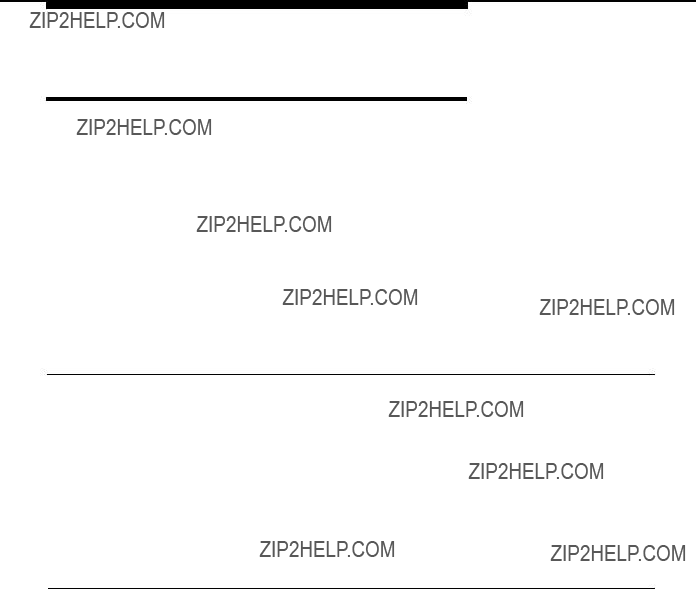
Features
System Speed Dial
Use System Speed Dial to dial
For
To Program System Speed Dial Buttons
1.Label button to be programmed with name or other identifier.
2.Press Feature and dial 00.
3.Press button you labeled.
4.Dial ??? 24.
5.Dial
6.Press Feature and dial ??? 00.
To Use System Speed Dial
1.Lift handset or press Speaker.
2.Press programmed Speed Dial button, or press Feature and dial
Your call is dialed automatically.

Features
Transfer
Transfer sends calls to both inside and outside phones. When a call you transferred to an inside phone goes unanswered, it rings back at your phone after the length of time programmed by your company. Unanswered calls transferred to outside phones do not ring back at your phone.
There are two basic ways to transfer a call:
??? You can call first to see if the person will take the call and then make the transfer (announced call).
??? You can transfer without announcing the call.
Note: Calls transferred to outside locations may vary in transmission quality. Ask your system manager if you can transfer calls to outside numbers.
Transfer 5 - 53

Features
To Make Announced Transfers
1.Press Transfer.
Call is put on hold automatically.
2.Press an SA or outside line button to make an outside transfer. See Notes.
3.Dial extension or outside phone number (including
4.Announce the call:
???If person can take the call, press Transfer or hang up.
???If person cannot take the call, return to call on hold by pressing
the line button with flashing green light. See Notes.
Notes:
??? Your phone automatically selects an SA Voice
or SA Ring or an ICOM Voice or ICOM Ring button. Press an ICOM or SA button only when the button you want to use is not selected automatically.
??? If the extension is busy, use
To Make Unannounced Transfers
1.Press Transfer.
Call is put on hold automatically.
2.Press an SA or outside line button to make an outside transfer. See Notes.
3.Dial extension or outside phone number (including
4.Press Transfer or hang up. See Notes.

Features
Notes:
??? Your phone automatically selects an SA Voice or
SA Ring or an ICOM Voice or ICOM Ring button. You do not need to press an ICOM or SA button when the button you want to use is selected automatically.
???If the extension is busy, use
???If the call is not answered in the time allowed by the system, it rings back at your phone.
One way to transfer calls to inside phones is by pressing Transfer and dialing the extension (see above). Another way is to use
Ask your system manager if your system is set up for
???
???
Transfer 5 - 55

Features
To Use
Press programmed Auto Dial button.
Call is transferred automatically.
Note:
To Use
1. Press programmed Auto Dial button.
Call is put on hold, and
2.Announce the call:
???If person can take the call, press Transfer or hang up.
???If person cannot take the call, return to call on hold by pressing the line button with flashing green light. See Notes.
Notes:
???If the extension is busy, use
???

Features
To Use
Completion for Unannounced Calls
1.Press programmed Auto Dial button.
Call is put on hold, and
2.Press Transfer or hang up. See Notes.
Notes:
???If the extension is busy, use
???
When transferring a call to a busy extension, use
Transfer 5 - 57
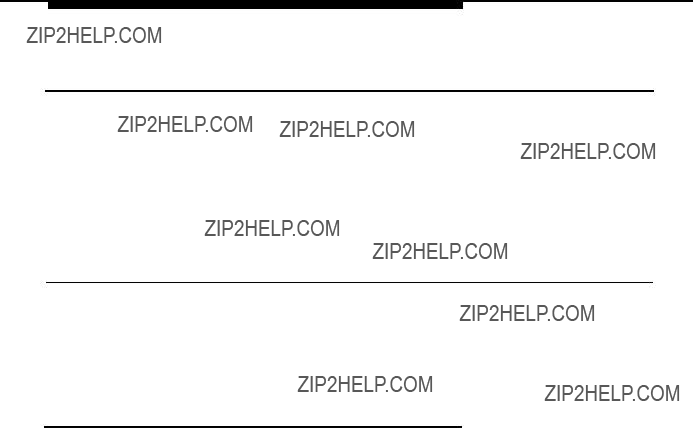
Features
To Program a
1.Label button to be programmed as
2.Press Feature and dial 00.
3.Press button you labeled
4.Dial ??? 57.
5.Press Feature and dial ??? 00.
To Use
If you reach a busy extension when attempting to transfer a call, press programmed
To Receive Transferred Calls
Transferred calls always come in on either an ICOM or SA button. How you answer a transferred call depends on how it was sent. If the person transferring the call announced the call, you are automatically connected to the transferred call when the transfer is completed. If the call is transferred to you unannounced, you answer the call as you would any other call.

Features
If you are busy on another call and receive a transferred call via
If more than one call is
To Answer Announced Transferred Calls
1.If red light is not on next to ICOM or SA button with call, press that button.
2.Lift handset or press Speaker.
You are connected with person transferring the call.
3.When
Transfer 5 - 59
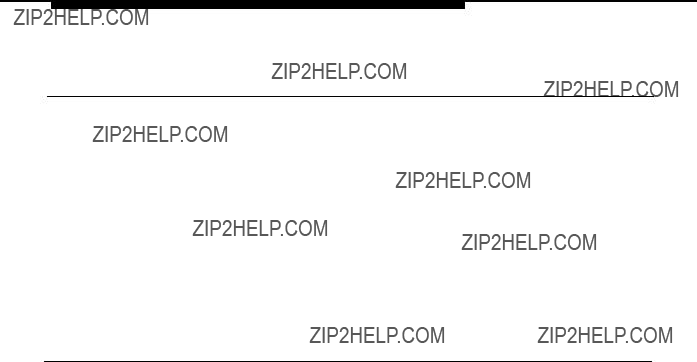
Features
To Answer Unannounced Transferred Calls
1.If red light is not on next to ICOM or SA button with call, press that button.
2.Lift handset or press Speaker.
You are connected with transferred call.
Note: If you don???t answer the transferred call in the time allowed by your system, the call returns to the person who transferred it.
To Answer
1.When you hear call waiting tone, hang up.
Your phone rings.
2.Lift handset or press Speaker.
You are connected to the call.
Note: If you don???t answer the

Features
Voice Announce
To prevent interruptions from
You do not have to program a button to turn this feature on and off.
To Program Voice Announce
1.Press Feature and dial 00.
2.Press any ICOM or SA button.
3.To prevent voice announcements, dial ??? ??? 10, or to receive voice announcements, dial ??? 10.
4.Press Feature and dial ??? 00.
Voice Announce 5 - 61

Programming Special
Characters
When you program Auto Dial buttons or PersonaI Speed Dial codes, you are storing a sequence of numbers to be dialed automatically.
Some sequences need special
The chart beginning on the next page describes special characters and is followed by an example of programming special characters in a Personal Speed Dial sequence.

Programming Special Characters
Ask your system manager which special characters are needed and when to use them. Also, see Auto Dial and Personal Speed Dial in Chapter 5.
Press... Means... Description
Drop Stop
Conf Flash
Inserts a stop within a sequence of automatically dialed numbers. For example, if you enter a credit card number, authorization code, or password that needs a response from the system, you insert a stop to allow time for a response, and then enter the next numbers in the sequence. Or, you can program an outside Auto Dial button with a password and a Stop, followed by a phone number. Then, to use Auto Dial with a stop in the sequence: press the button to dial the password, listen for the dialing and connection, and press the button again to dial the phone number.
Sends a switchhook flash needed for some custom calling features. Flash must be the first entry in the sequence.
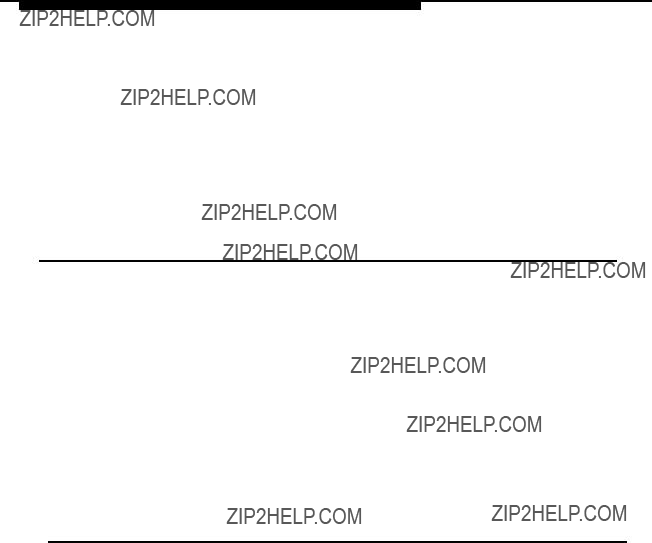
Programming Special Characters
Press... Means...
Hold Pause
Description
Inserts a brief pause (1.5 seconds) in the dialing sequence to wait for a response, such as a new dial tone. If you insert two pauses, for example, automatic dialing continues after a
##End of Dialing
Speeds call processing by the system. Use at the end of a dialing sequence to indicate you have finished dialing or to separate one group of dialed digits from another. To send one pound character, you must enter # #. For example, if you must enter an account code before dialing a number, you can program the account code foIlowed by # #, and the phone number.

Programming Special Characters
Example of Using Special
Characters
When you program a Personal Speed Dial number that includes a
1. Dial
2.Enter pause(s) by pressing Hold to wait for a second dial tone.
3.Dial
4.Dial area code and phone number.
5.Dial # # to indicate end of dialing.
The dialing sequence described is as follows: 9 Hold Hold 10ATT 215 555 1234 ##.
See Chapter 5 for more on Personal Speed Dial.

Feature Codes
When you haven???t programmed a line button for a feature, use the feature code to activate the feature. To use a feature code, press the Feature button and dial the code.
Not all features can be activated by a code. Some features, like Do Not Disturb, must be programmed onto a line button to turn the feature on and off. The light next to the button reminds you that the feature is in use. Feature codes for your
Feature Codes B - 1

Feature Codes
Account Code Entry
Call Waiting
pick up???
Follow Me???
Forward
inside
outside
Forward/Follow Me
cancel from all extensions??? cancel from one extension??? cancel from your phone
Last Number Dial Messaging
cancel message??? leave message
leave message without calling turn Message light off
Paging
loudspeaker page Personal Speed Dial???
82 + code
55
87
57
34 + extension
33 + extension
33 +
??? 34 ???
???34 + extension
33 + your extension
84
???53 + extension
25
53
54
9 + line number + zone code
code
??? Denotes features that must be used via feature codes.

Feature Codes
Pickup
group pickup inside outside
Privacy off on
Recall
Reminder Service cancel reminder set reminder
System Speed Dial
88
9 + extension
9 + line number
??? 31 31 775
??? 81
81 + time + A or P code
Feature Codes B - 3

Programming Codes
Programming codes are used to program a feature onto a button for
Programming Codes C - 1

Programming Codes
Callback
automatic callback off??? automatic callback on??? selective callback
Call Waiting off???
on???
group???
inside and outside??? off???
outside only???
primary individual coverage??? secondary individual coverage???
Do Not Disturb??? Forward Headset/Handset Mute??? Last Number Dial
?????? 12
???12
???55
?????? 11
???11
???57
???42 + group
???48
???49
?????? 48
???40 + extension
???41 + extension
???47
???33
???783
???84
??? Denotes features that must be programmed onto a line button.
??? Denotes features that setup how your phone works; they are not used by pressing a programmed button.

Programming Codes
Messaging leave message
turn Message light off posted message???
Paging group
Park
Personalized Ring??? Personal Speed Dial Pickup
general pickup group pickup inside
outside Privacy Recall
Reminder Service cancel reminder set reminder
???25
???54
???751
???22 + group ext.
???86
???32 + ring(s)
#
???9
???88
???9+ extension
???9+ line number
???31
???775
?????? 81
???81
??? Denotes features that must be programmed onto a line button.
???Denotes features that setup how your phone works; they are not used by pressing a programmed button.
Programming Codes C - 3

Programming Codes
Ringing Options Abbreviated off??? Abbreviated on??? delayed all Iines??? delayed one Iine??? immediate all lines??? immediate one line no ring all lines???
no ring one line??? Saved Number Dial??? Signaling and Notify
signaling??? notify receive??? notify send???
System Speed Dial Voice Announce
off???
on???
???342
???341
???346
???36
???347
???37
???345
???35
???85
???23 + extension
???758 + extension
???757 + extension
???24 + code
?????? 10
???10
??? Denotes features that must be programmed onto a line button.
??? Denotes features that setup how your phone works; they are not used by pressing a programmed button.

Index/Glossary
A
Abbreviated Ring
The standard setting that rings your phone once when you are on a call.
account code
A code used by your company to associate incoming and outgoing calls with corresponding accounts, employees, projects, and clients.
Account Code Entry
A feature you use to enter account codes.
Auto Dial
A feature you use to automatically dial an inside or outside number by pressing a programmed button.
Automatic Callback
See Callback.
B
button labeling card
A card you can label with the lines and features you assign to the line buttons.
Index/Glossary I G - 1

Index/Glossary
C
Callback
A feature that automatically redials your call as soon as a busy extension or busy line is free.
Selective
Automatic
Call Waiting
A feature that signals you with a tone when you have an incoming call while you are on the phone.
A feature you use to hold a transferred call at a busy extension and put the call through automatically when the extension is free.
Conf button
A button you press to set up a conference call.
Conference
A feature you use to set up a single call with up to four other people.
Coverage
A feature
Individual
Group

Index/Glossary
D
dedicated feature buttons
The imprinted feature buttons on your phone, for example, Transfer and Hold.
desk stand
An adjustable support you can remove from the phone for wall mounting.
A code (usually a 9) you must dial when using an SA (System Access) button to make an outside call.
d i a l p a d
The numbered buttons and the asterisk ( ??? ) and pound sign ( # ) on your phone.
digital/ISDN (MLX) telephone
A style of phone that is compatible with the system and includes the
distinctive rings
Four different ways your phone rings to identify an inside, outside, transferred, or returning call.
Do Not Disturb
A feature you use to prevent ringing calls and
Drop button
A button you use to disconnect a participant from a conference call or to cancel a Callback call.
Index/Glossary

Index/Glossary
F
fax machine
Equipment that can be connected to a phone to produce an exact likeness of a document and send it instantaneously to similar equipment at another location.
Feature button
An imprinted button you press to use features via their feature code.
feature code
A
Feature Finder
A table in this book that helps you find features by function instead of by name.
Follow Me
A feature that sends your calls to a
Forward
A feature you use from your phone to send your calls to any phone inside or outside the system.

Index/Glossary
G
Group Coverage
See Coverage.
Group Paging
See Paging.
Group Pickup
See Pickup
H
handset
The
Headset/Handset Mute
A feature you use to mute the microphone in your headset or handset so you can speak privately with someone in your office without your caller hearing you.
HFAI button
(Hands Free Answer on Intercom.) A button you press to set up your phone so you can answer
Hold button
A button you use to put a call on hold.
Index/Glossary I G - 5

Index/Glossary
I
ICOM (Intercom) buttons
Three buttons you use to make inside calls.
ICOM Ring
ICOM Voice
ICOM Originate
Individual Coverage
See Coverage.
inside calls
Calls to and from
Ringing
L
Last Number Dial
A feature you use to automatically redial the last inside or outside number you called.
Leave Message
A Message feature you use to leave messages for

Index/Glossary
line buttons
The rows of buttons above and/or to the right of your dialpad, which you or your company can program with lines or features.
Line Request
A feature that alerts you when a busy outside line is free.
Loudspeaker Paging
See Paging.
M
Message light
A light that goes on when you have a fax or a
Messaging
A feature you use to get
Mute button
A button you press to mute your speakerphone so you can speak privately with someone in your office without your caller hearing you.
Index/Glossary I G - 7

Index/Glossary
N
Notify
A Signaling feature you use to notify a
Notify Receive button
A programmed button on your phone that goes on when a
Notify Send button
A programmed button you use to notify a
O
A feature you use to put a call on hold and transfer it to an extension.
Auto Dial button to automatically transfer a call.
outside call

Index/Glossary
P
Page All button
See Paging.
Paging
A feature you use to broadcast announcements through your
Loudspeaker
Speakerphone
Park
A feature you use to put a call on hold so it can be picked up from any extension.
Personalized Ring
A feature you use to select one of eight different ringing patterns to distinguish your phone???s ring from other phones in your area.
Personal Speed Dial
A feature you use to dial
Pickup
A feature you use to answer a ringing phone from another extension or to pick up a parked call.
Index/Glossary I G - 9

Index/Glossary
Pool button
A line button you use to make and receive outside calls on phones with SA (System Access) buttons. Only SA button phones have Pool buttons.
Posted Message
A Messaging feature you use to post a message on
Privacy
A feature you use to prevent unwanted interruptions during a phone call.
programming code
A
R
Recall
A feature you use to disconnect from one outside call and get a dial tone to dial another number without hanging up your handset or pressing the Speaker button.
Reminder Cancel button
A button you press to cancel previously set reminder times.
Reminder Service
A feature you can set to automatically ring your phone at specific times.

Index/Glossary
Reminder Set button
A button you press to set reminder times.
Ringing Options
A feature you use to control whether or not your phone will ring and how it will ring.
S
SA (System Access) buttons
Three buttons you press to make inside and outside calls.
SA Ring
SA
Saved Number Dial
A feature you use to automatically redial a number you saved by pressing a programmed button.
Selective Callback
See Callback.
Shared SA button
A button you press to answer calls for
Signal button
A button you program to signal (beep) a
Index/Glossary I G - 11

Index/Glossary
Signaling
A feature you use to send a private signal (a beep) to a
Speaker button
A button you press to activate the
speakerphone
The part of your phone that allows you to make and receive calls without using the handset.
Speakerphone Paging
See Paging.
special character
A pause, stop, or
system manager
A
system operator
A
System Speed Dial
A feature you use to dial

Index/Glossary
System Speed Dial
A feature you use to dial
T
Tone
The signal you hear when making a call or using a feature.
Transfer
A feature you use to send calls to inside and outside phones.
Transfer button
A button you press to transfer calls to other phones.
U
user cards
Instruction cards stored in the card tray under your phone.
Index/Glossary I G - 13

Index/Glossary
V
Voice Announce
A feature you use to allow your phone to receive voice announcements or to prevent your phone from receiving voice announcements.
Calls you receive via the speakerphone.
Volume control
A button for controlling the volume of your phone???s ring, handset, and speakerphone.
W
WATS (wide area telephone service)
A service that allows you to make calls to or from certain areas for a